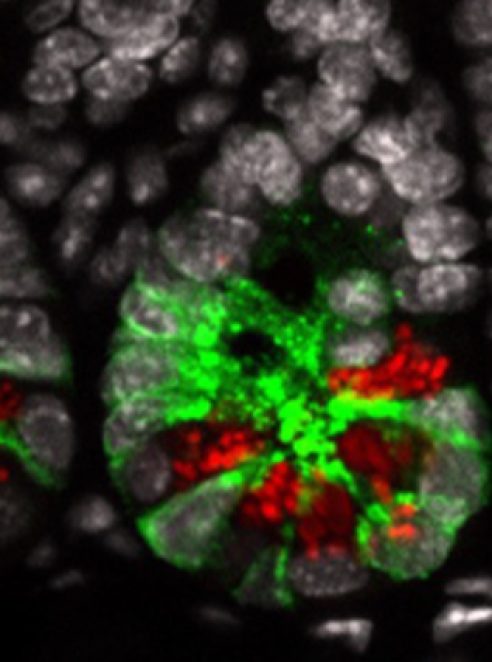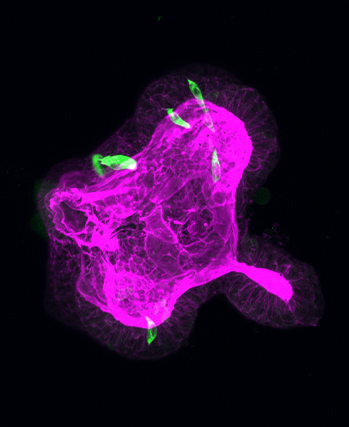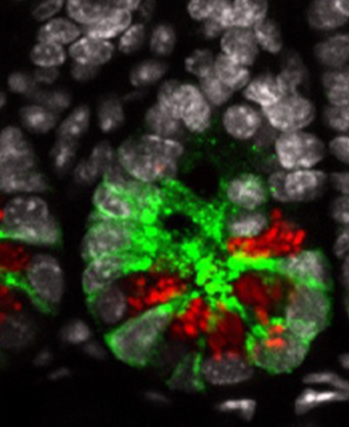After birth, the epithelium that lines our gut transitions (or matures) so that it can deal with the transition from milk to solid foods. During this time more and more bacteria enter the gut to establish the microbiota, and so the epithelium also strengthens its barrier role by starting to secrete large amounts of antimicrobials that come from specialized epithelial Paneth cells. In this study, we identify the lysine demethylase LSD1 to be critical for the appearance of Paneth cells early in life. We further find that LSD1 accomplishes this by regulating specific histone marks to control persistent gene expression in gut epithelium. Altogether, this work establishes an important role for LSD1 in intestinal epithelial biology, both early in life and during challenges that damage the gut and require wound healing such as after ionizing radiation. Such damage is a common side effect in cancer patients receiving irradiation therapy, and thus we hope that in the future targeting LSD1 could be helpful for these patients.
LSD1 represses a neonatal/reparative gene program in adult intestinal epithelium
Research Area: Cell Biology
https://www.science.org/doi/10.1126/sciadv.abc0367
Authors: Rosalie T. Zwiggelaar, Håvard T. Lindholm, Madeleine Fosslie, Marianne Terndrup Pedersen, Yuki Ohta, Alberto Díez-sánchez, Mara Martín-alonso, Jenny Ostrop, Mami Matano, Naveen Parmar, 6emilie Kvalø, Roos R. Spanjerskamran Nazmimorten Rye, Finn Drabløs, Cheryl Arrowsmithjohn Arne Dahl, Kim B. Jensen, Toshiro Sato, Menno J. Oudhoff

Related Articles

Publication
BMP signaling in the intestinal epithelium drives a critical feedback loop to restrain IL-13-driven tuft cell hyperplasia
Although Helminth infections are prevalent throughout the world, they are particular a health...

Publication
LSD1 represses a neonatal/reparative gene program in adult intestinal epithelium
After birth, the epithelium that lines our gut transitions (or matures) so that it can deal...
Publication
Targeting mRNA binding proteins to respond to stress responses
The paper establishes the phosphorylation of heterogeneous nuclear ribonucleoprotein A1...